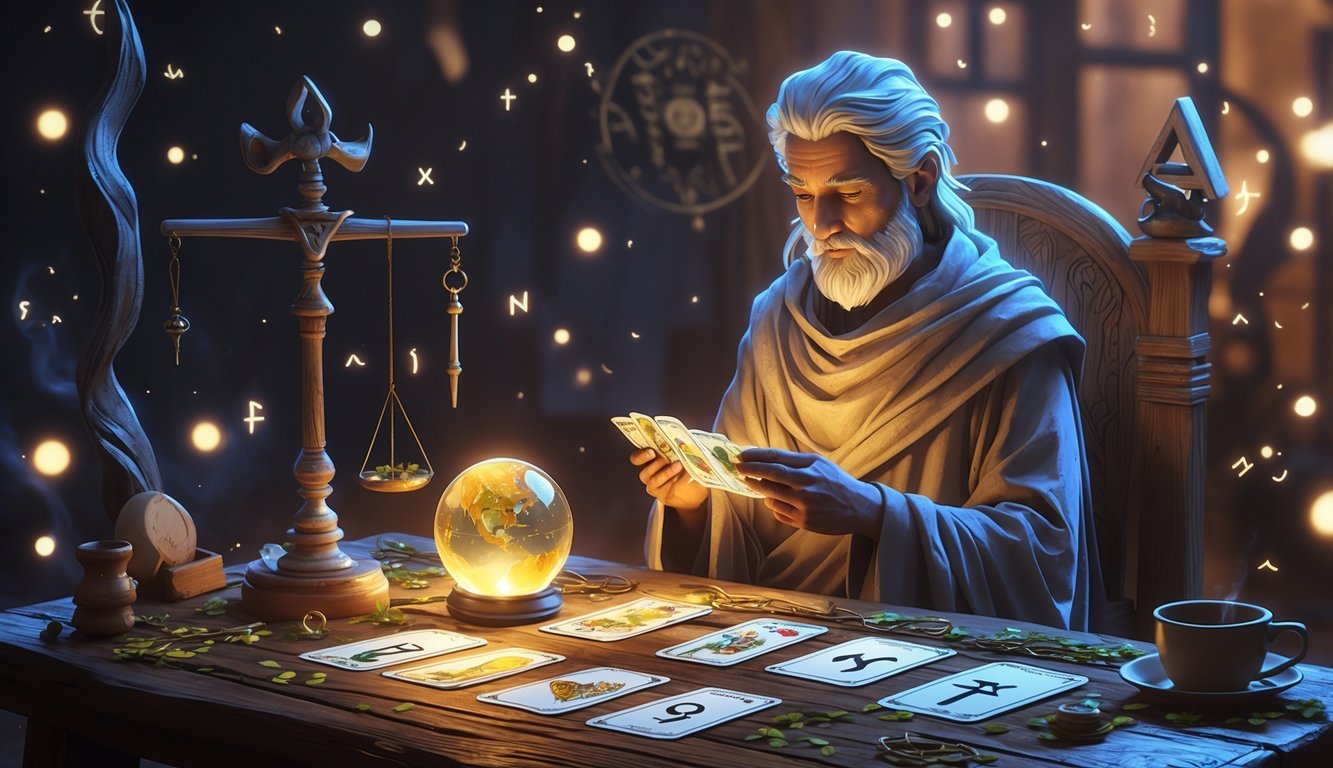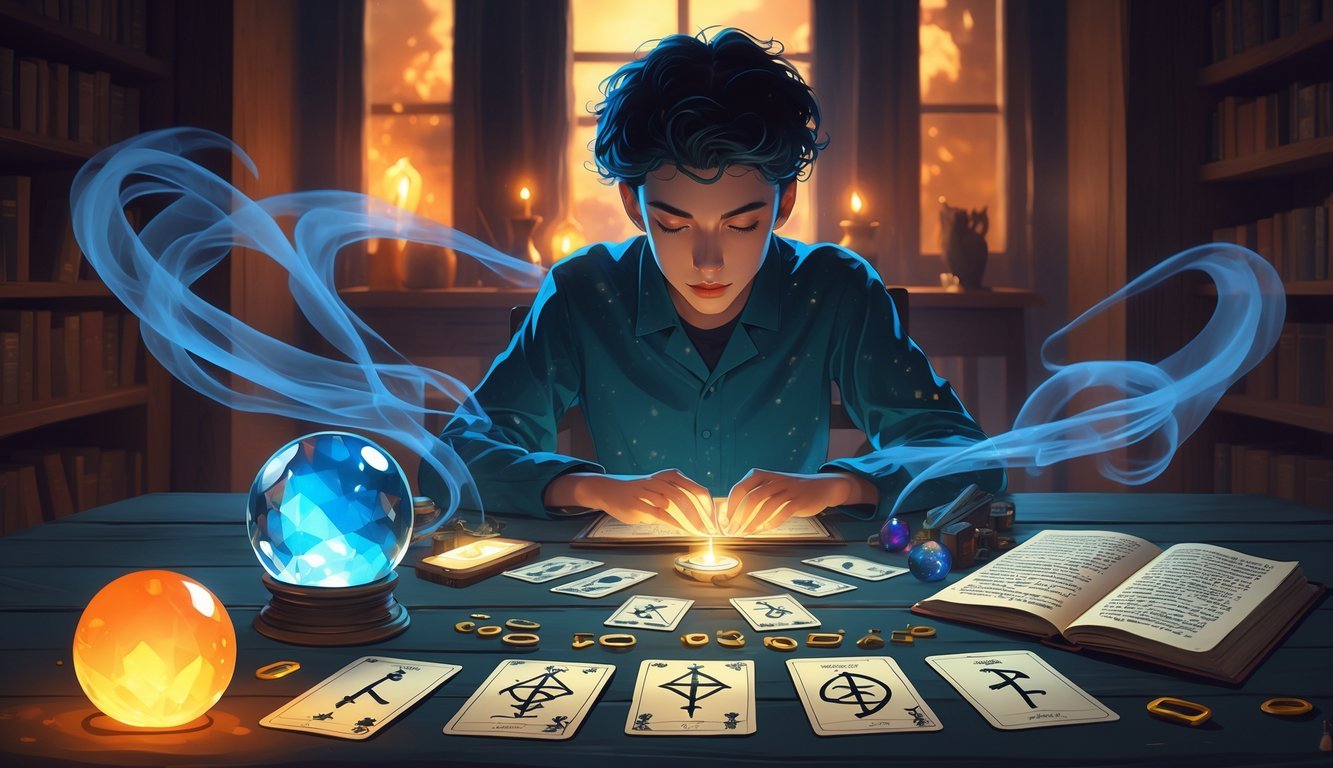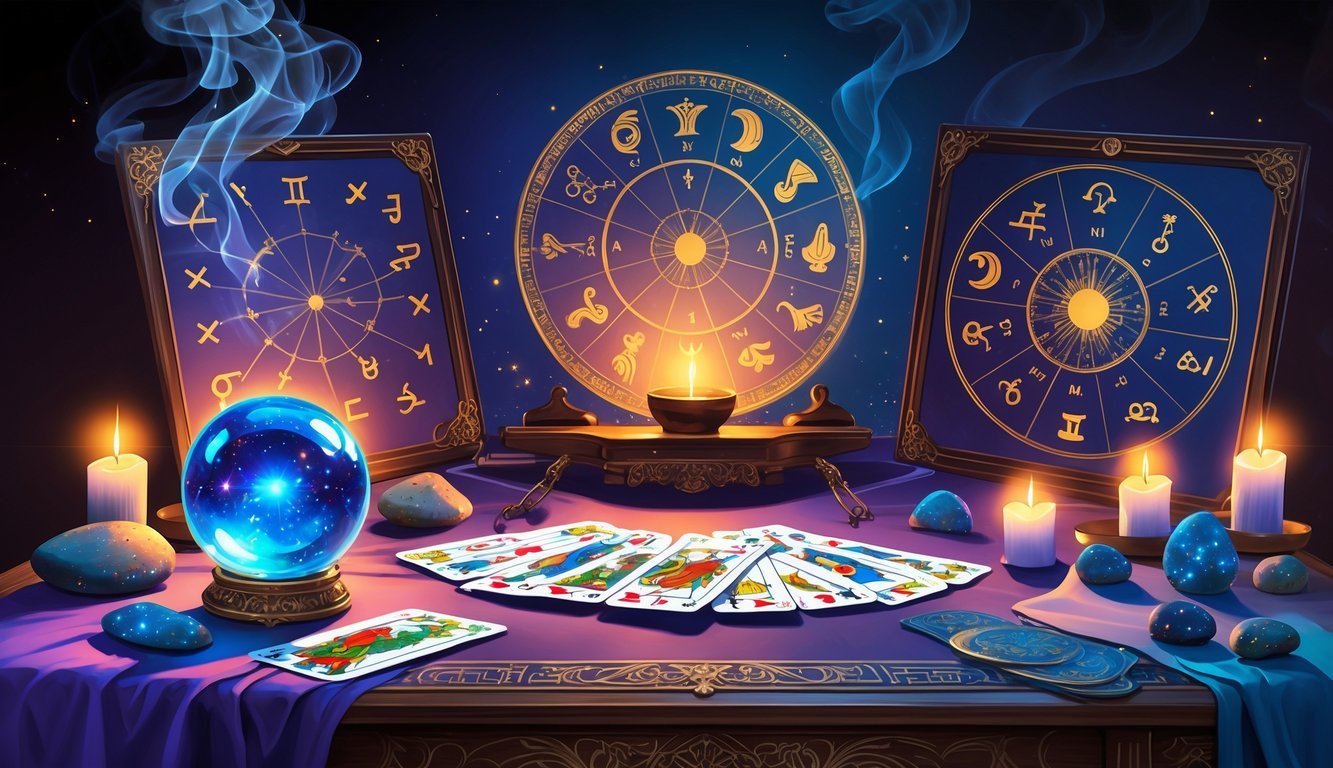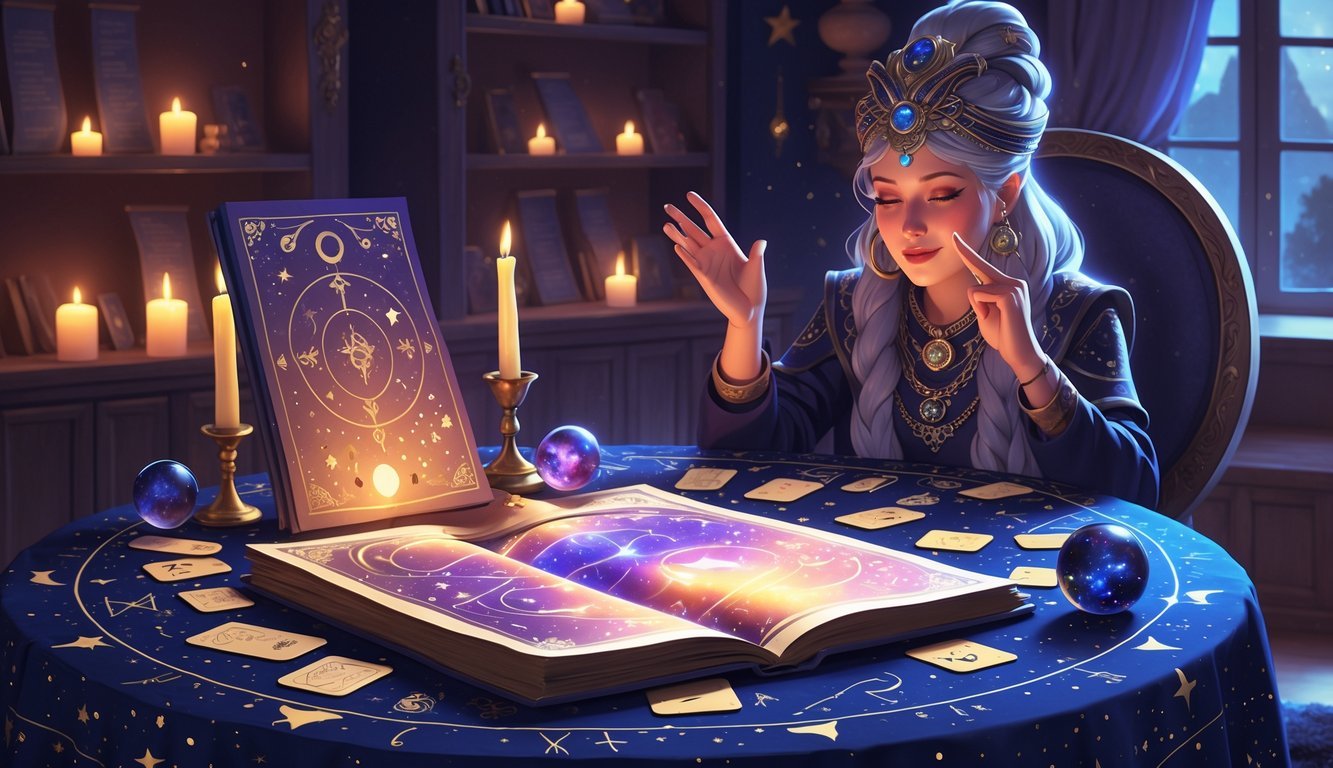PsychNewsDaily Publishers
100 Summit Drive
Burlington, MA, 01803
Telephone: (320) 349-2484
PsychNewsDaily Publishers
100 Summit Drive
Burlington, MA, 01803
Telephone: (320) 349-2484
Divination uncovers hidden knowledge and predicts future events through various methods, including astrology, tarot, and natural signs, deeply rooted in human culture.

Divination helps people make sense of things that aren’t obvious or visible, often by turning to special tools or rituals. It’s basically the art of seeking hidden knowledge or trying to predict what’s coming next, using different signs or ceremonies. You’ll find some form of divination in nearly every culture, stretching back as far as anyone can remember.
Maybe you picture cards, crystals, or even star charts when you hear about divination. Each method offers a way to get a little insight into your questions or problems, and sometimes even helps you make choices.
Whether you want to peek at its history or just see how it works now, learning about divination can open your mind to how people try to connect with the unknown.

Divination lets you search for hidden knowledge or make sense of events by using special signs or rituals. People have tried all sorts of ways to do this, usually hoping to glimpse the future or uncover secrets.
You’ll spot divination in many cultures and eras, which says a lot about how much people want guidance.
You can trace divination all the way back to ancient human societies. In Mesopotamia, folks studied the stars and animal organs to predict what might happen.
During the Middle Ages, priests and healers in Europe paid close attention to signs for advice or decision-making.
In Trans-Saharan Africa, divination still thrives, often involving spirits or ancestors. Cultures everywhere have invented their own ways to reach out to the unknown.
That variety really shows how deeply rooted divination is in human life.
Divination shows up in many forms. You might see people reading cards, watching natural signs, or tossing bones and stones for answers.
Each type has its own purpose—some warn you, some help you decide, some explain why things happen.
A few methods help diagnose illness, while others ask for help from spirits or higher powers. You might turn to divination for advice about the future or guidance on a personal issue.
It’s honestly pretty flexible, and that’s part of its appeal.
People often mix up divination and fortune-telling, but they aren’t quite the same. Fortune-telling usually focuses on predicting what’ll happen to you personally—your luck, your love life, that sort of thing.
Divination can go broader. It might search for hidden causes behind events or offer guidance on big choices, not just your future.
Fortune-telling tends to be quick and simple, while divination sometimes gets more ritualistic and thoughtful. Knowing the difference helps you see why divination holds a special place in many cultures.

Divination uses all sorts of tools and rituals to find answers or insight. Some methods look to nature—birds, clouds, whatever’s around. Others use cards, crystals, or old texts.
You’ll find both really simple and surprisingly complex techniques, depending on what you’re after.
Astrology studies the stars and planets to get a sense of your personality or predict events. Your birth chart acts like a snapshot of the sky when you were born.
It can reveal your strengths, challenges, and maybe even hint at what’s ahead.
Omens are signs in your environment—like seeing a certain bird or a sudden change in weather. Some cultures, like the Etruscans, watched animals or natural events to make big decisions.
Both astrology and omens rely on nature’s patterns to guide you.
Tarot uses a deck of 78 cards, each packed with symbols that reflect different parts of life. When you shuffle and draw, the cards tell a story that helps answer your questions.
Cartomancy works a lot like tarot but uses regular playing cards or other decks. Oracle cards are even more flexible, with all sorts of themes—angels, animals, you name it.
These card readings are great if you like visuals and stories to help you reflect.
Scrying means staring into something reflective to spot symbols or visions. You might use a crystal ball, a dark mirror, or even a bowl of water.
Crystal gazing taps into your intuition through the clarity of stones. Water scrying, or hydromancy, uses the movement of water for messages.
These methods need a quiet space and a bit of patience, but they can really sharpen your intuition.
Casting means tossing objects—stones, bones, sticks—and reading the patterns they make. The I Ching from China is a classic: you toss coins or sticks, then interpret the resulting hexagrams.
Cleromancy is a catch-all for casting lots, using dice or small objects. You pay attention to how they land and what patterns show up.
If you like something hands-on, these methods mix action with thoughtful interpretation.
Augury comes from ancient Rome and involves watching birds—their flight, their calls, their direction—to make decisions.
Ornithomancy is similar but pops up in lots of places. You might watch crows, roosters, or ravens for signs.
Osteomancy reads bones or animal parts. Haruspicy is a type where you examine animal entrails, especially after a sacrifice. Ancient Etruscans did this to find meaning in animal organs.
These methods tie you to animals and the natural world for messages.
Necromancy deals with talking to the dead for information. It’s an old practice, often shrouded in mystery or taboo. Some people use tools like Ouija boards to reach out to spirits.
Shamanism also connects with the spiritual world. Shamans enter trance states and seek guidance from spirits, ancestors, or nature itself. They might use drums, chanting, or rituals to reach hidden knowledge.
Both traditions step beyond the physical, looking for insight from the spirit world.
Some people use books for divination, like bibliomancy, where you open a book at random and see what message you find.
There’s automatic writing too—letting your hand move freely to write whatever comes, sometimes believed to be messages from spirits or your subconscious.
Other paths include pyromancy (reading fire patterns) or dowsing (using rods or pendulums to find water or objects).
Some methods even study physical traits, like phrenology (head shape) or physiognomy (face reading). Numerology looks for meaning in numbers tied to your life.
You really have plenty of options if you want to explore.

Divination taps into many tools and traditions to help you glimpse possible futures or get answers. Some practices go way back, while others show up in games or stories you know.
You can use tarot cards, runes, or pendulums for divination magic. Some people read tea leaves or analyze dreams.
Each method gives you another way to pick up messages or clues about what’s ahead.
Ancient diviners read animal entrails—called haruspicy. Astrology, or reading the stars, is another old favorite.
People also watched bird flights or used bones and shells to find guidance.
In Harry Potter, divination pops up with crystal balls and tea leaves. The story treats it as a tricky, sometimes unreliable skill.
Characters use it to try to predict danger or decide what to do next.
In Dungeons and Dragons 5e, divination spells let you uncover secrets or catch glimpses of the future. Players use these spells to plan moves or solve mysteries in the game.
Divination often means connecting with a higher power to get guidance. People use it to make sense of life’s challenges or seek spiritual direction.
Many religions turn to divination as a way to find wisdom.
In RuneScape 3, you’ll find divination as a skill that lets players gather and use energy to make things. The game weaves this skill into its story, so you feel like you’re part of something bigger.
Players use divination to craft useful items or earn experience. It’s not really about fortune-telling—think of it more as a way to create magical stuff.